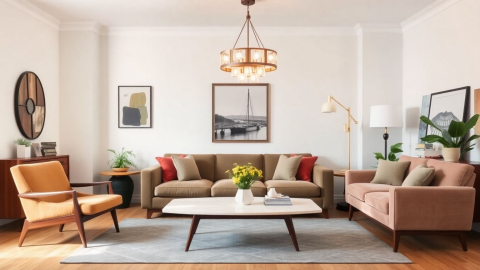Brutalist Interior Design: From Concrete Jungle to Cozy Haven
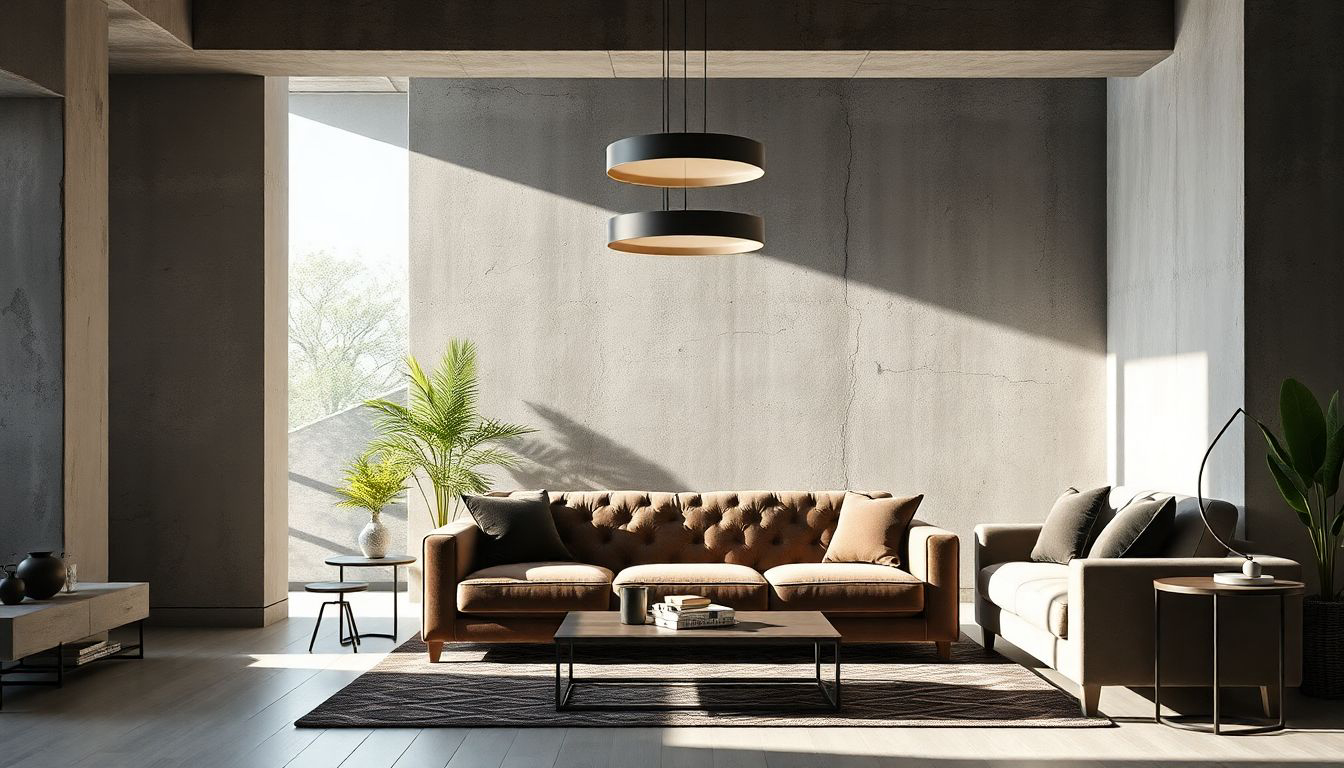
When you hear the term "brutalist," images of imposing concrete structures and stark, austere interiors might come to mind. However, brutalist interior design has undergone a remarkable transformation in recent years, evolving from its utilitarian roots to become a sought-after aesthetic in modern homes and public spaces. This dramatic shift has sparked a renewed interest in the style, with designers and homeowners alike discovering innovative ways to incorporate brutalist elements into welcoming, livable spaces. In this comprehensive guide, we'll explore the fascinating world of brutalist interior design, its history, key characteristics, and how it's being reimagined for contemporary living.
The Origins of Brutalism: More Than Just Concrete
Brutalism emerged in the 1950s as a response to the devastation of World War II and the need for rapid, cost-effective reconstruction. The term "brutalism" comes from the French phrase "béton brut," meaning "raw concrete," coined by the legendary architect Le Corbusier. However, it's essential to understand that brutalism is about more than just concrete facades and stark minimalism.
As Mark Bittoni, principal of Bittoni Architects, explains, "The style is characterized by raw, exposed concrete and bold geometric forms. You've certainly seen it before in many cultural and civic buildings built between the 1950s and '70s." Brutalism was a bold statement against the frivolity of previous architectural styles, emphasizing honesty in materials and construction methods.
The philosophy behind brutalism was rooted in social idealism. Many early brutalist buildings were affordable housing projects and public institutions, aiming to create functional, egalitarian spaces that could improve the lives of ordinary people. This marriage of ethics and aesthetics set brutalism apart from other architectural movements of its time.
The Evolution of Brutalist Interiors: From Austere to Inviting
While brutalist architecture often conjures images of imposing, monolithic structures, the interior spaces of these buildings tell a different story. Contrary to popular belief, brutalist interiors can be surprisingly airy and spacious. The Bank of London and South America in Buenos Aires, designed by Clorindo Testa and SEPRA, is a prime example of how brutalist exteriors can house light-filled, expansive interiors.
In recent years, there has been a shift towards softening brutalist interiors, making them more welcoming and livable. Interior designers are finding creative ways to balance the raw, industrial elements of brutalism with warmer, more inviting features. As California-based interior designer Lane McNab notes, "I love the juxtaposition of the rough with the refined to give a design depth."
Key Elements of Modern Brutalist Interiors
- Exposed Materials: Raw concrete, steel beams, and exposed brick remain hallmarks of brutalist design. However, designers are now incorporating these elements more thoughtfully, often contrasting them with softer textures and warmer materials.
2. Bold Geometric Forms: Large, striking shapes continue to define brutalist spaces, but they're being balanced with more organic forms and curves to create visual interest.
- Monochromatic Color Palettes: While grey remains a dominant color in brutalist interiors, designers are introducing pops of color to add warmth and personality to spaces.
4. Statement Lighting: Brutalist-inspired lighting fixtures, often featuring angular designs and metallic finishes, serve as functional art pieces in modern interiors.
- Textural Contrasts: Designers are pairing rough, industrial surfaces with plush fabrics and natural materials to create a more inviting atmosphere.
Softening the Edge: Creating Welcoming Brutalist Spaces
One of the most exciting trends in brutalist interior design is the movement towards creating softer, more welcoming spaces while still honoring the style's core principles. This approach is beautifully illustrated in a project by interior designer Greg Natale in Kyle Bay, Sydney.
Natale explains, "The home's architectural language is quite hard-edged and brutalist, with clean lines and copious use of exposed concrete." However, instead of leaning into a stark, minimalist aesthetic, Natale introduced vibrant colors and playful, retro elements to create a space that feels both brutalist and inviting.
"Michelle requested clashing colours throughout the home, leading to an unexpected yet vibrant blend that includes green, burgundy, teal and citrus tones, with her favourite pastel pink on walls and curtains to balance the harder finishes," Natale says. This bold use of color demonstrates how brutalist spaces can be transformed into warm, personalized environments without compromising their architectural integrity.
The Psychology of Brutalist Interiors
The resurgence of brutalism in interior design raises interesting questions about our psychological relationship with our living spaces. Why are people drawn to the raw, honest aesthetics of brutalism in an age of digital perfection and constant visual stimulation?
Gianluigi Ricuperati, in an article for SSENSE, offers an intriguing perspective: "Because concrete, unlike other architectural surfaces, is very similar to our skin. It is perfect and damaged at the same time, and its beauty relies precisely on the ambiguous nature of how we—humans—perceive ourselves now."
This idea suggests that brutalist interiors resonate with our desire for authenticity and imperfection in a world that often feels overly polished and artificial. The tactile, imperfect surfaces of brutalist design elements provide a sense of groundedness and connection to the physical world that many find comforting.
Brutalism in the Digital Age: A New Appreciation
Interestingly, the rise of social media has played a significant role in the renewed appreciation of brutalist architecture and interior design. The stark, geometric forms and textured surfaces of brutalist spaces lend themselves well to striking photographs, making them popular subjects on platforms like Instagram.
However, this digital appreciation of brutalism has also led to some criticism. Jo Livingstone, writing for The New Republic, argues that the aestheticization of brutalist architecture on social media often strips it of its historical and social context. "It is not possible to relate to these buildings on a purely aesthetic level," Livingstone contends, "because their use-function is an inextricable element of their form."
This tension between the aesthetic appreciation of brutalism and its deeper social and historical significance highlights the complexity of the style's revival in contemporary design.
Incorporating Brutalist Elements in Your Home
For those inspired by brutalist design but unsure how to incorporate it into their homes, there are several approachable ways to introduce brutalist elements without committing to a full concrete makeover:
- Statement Furniture: Look for pieces with strong geometric shapes, raw materials, or brutalist-inspired designs. A concrete coffee table or a metal sculpture can add a brutalist touch to any room.
2. Lighting: Brutalist-style light fixtures, with their bold forms and metallic finishes, can serve as striking focal points in a space.
- Textural Contrasts: Pair rough, industrial materials with softer textures like plush rugs or velvet upholstery to create a balanced, inviting atmosphere.
4. Color Palette: While brutalism is often associated with grey tones, don't be afraid to introduce bold colors as accents. As we've seen, even pastel shades can work beautifully in a brutalist-inspired space.
- Exposed Elements: If possible, consider exposing structural elements like concrete floors or brick walls to add authentic brutalist character to your space.
The Future of Brutalist Interior Design
As we look to the future, it's clear that brutalist interior design will continue to evolve. The current trend of softening brutalist spaces while maintaining their core principles is likely to persist, with designers finding new ways to balance raw materials with comfort and warmth.
There's also growing interest in exploring the sustainability aspects of brutalist design. The durability and longevity of materials like concrete align well with current concerns about sustainable building practices, potentially leading to innovative eco-friendly interpretations of brutalist design.
Moreover, as our digital lives become increasingly dominant, the tactile, grounded nature of brutalist interiors may become even more appealing. These spaces offer a counterpoint to the virtual world, providing a sense of permanence and physicality that many crave in our rapidly changing environment.
In conclusion, brutalist interior design has come a long way from its austere beginnings. Today, it offers a unique blend of raw honesty and sophisticated comfort, challenging our perceptions of what makes a space beautiful and livable. As we continue to redefine our relationship with our built environment, brutalism stands as a testament to the enduring power of bold, honest design.
References and Further Reading
- Brutalist Architecture: Everything You Need to Know - Architectural Digest
- Why Brutalism and Instagram Don't Mix - The New Republic
- A 10 Building Guide to Brutalist Architecture - SSENSE
- Design Cheat Sheet: Everything You Need to Know About Brutalist Design - MyDomaine
- 'They're divisive!' How an unexpected take on Brutalist interiors has us convinced these spaces can be soft and welcoming - Living Etc
- The 9 Brutalist Wonders of the Architecture World - GQ
These resources offer a wealth of information on brutalist architecture and interior design, providing deeper insights into the history, philosophy, and contemporary applications of this fascinating style.
More Articles
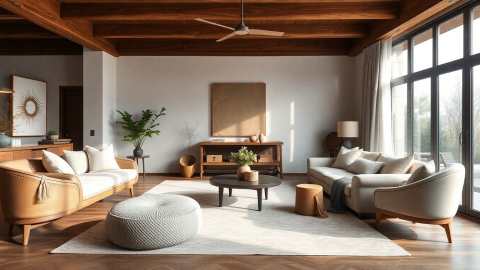
The Art of Nouveau: Crafting Timeless Elegance in Modern Interiors
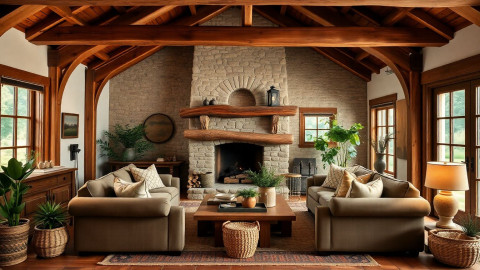
Farmhouse Interior Design: Blending Rustic Charm with Modern Comfort
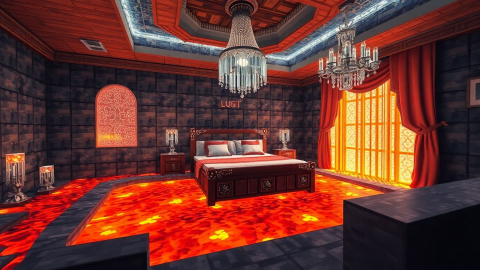
The Minecraft Interior Design Extravaganza: Where Pixels Meet Pretension
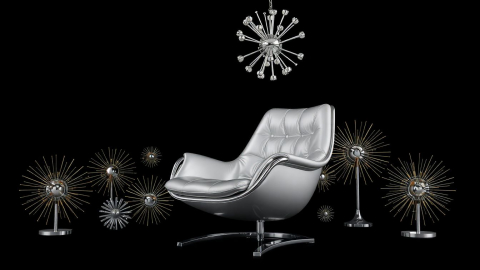
Space Age Interior Design: Where Retrofuturism Meets Domestic Bliss
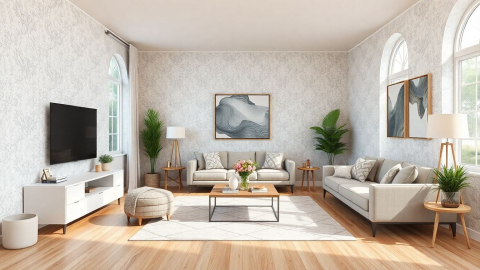
Revolutionizing Interior Design: Harnessing the Power of AI for Stunning Spaces
